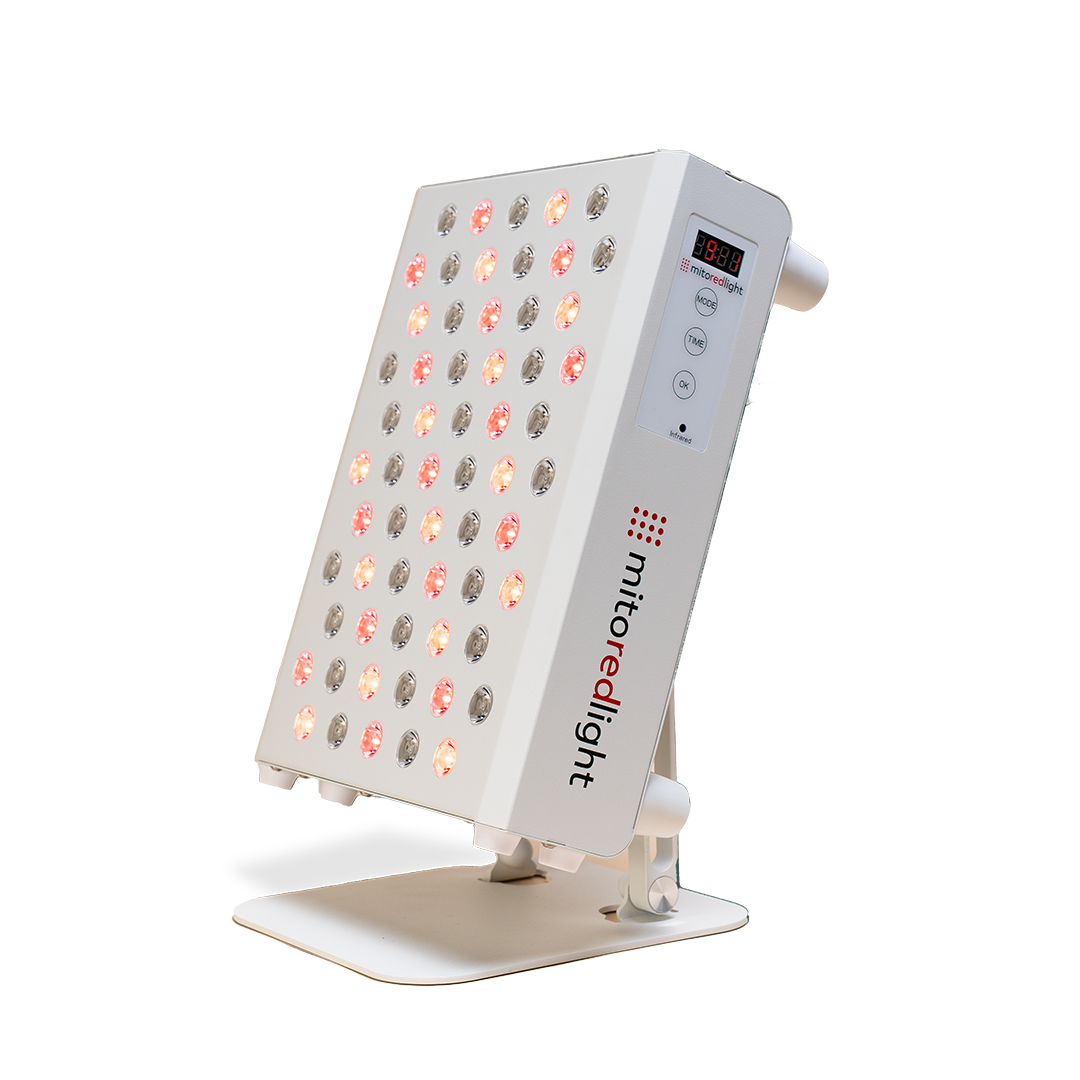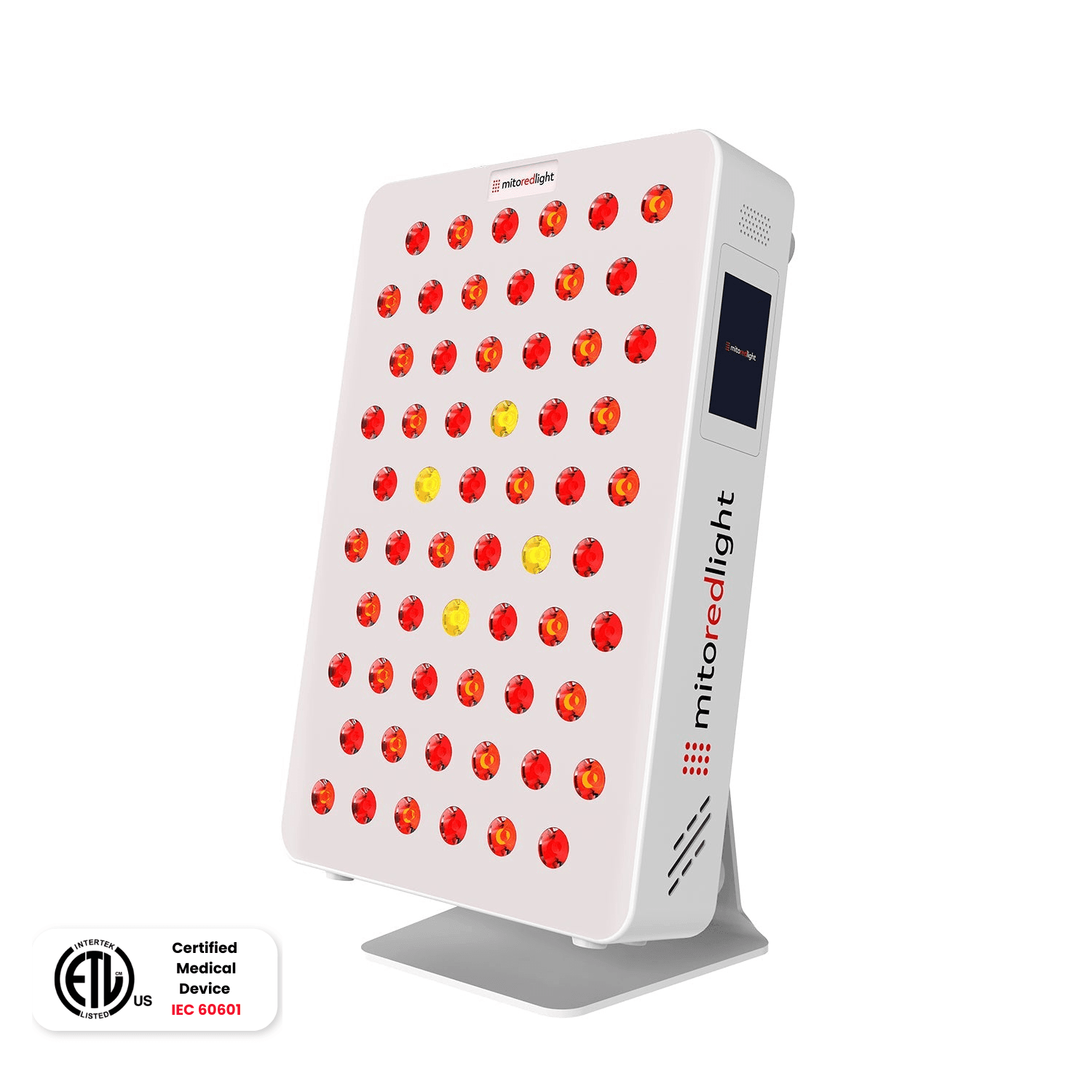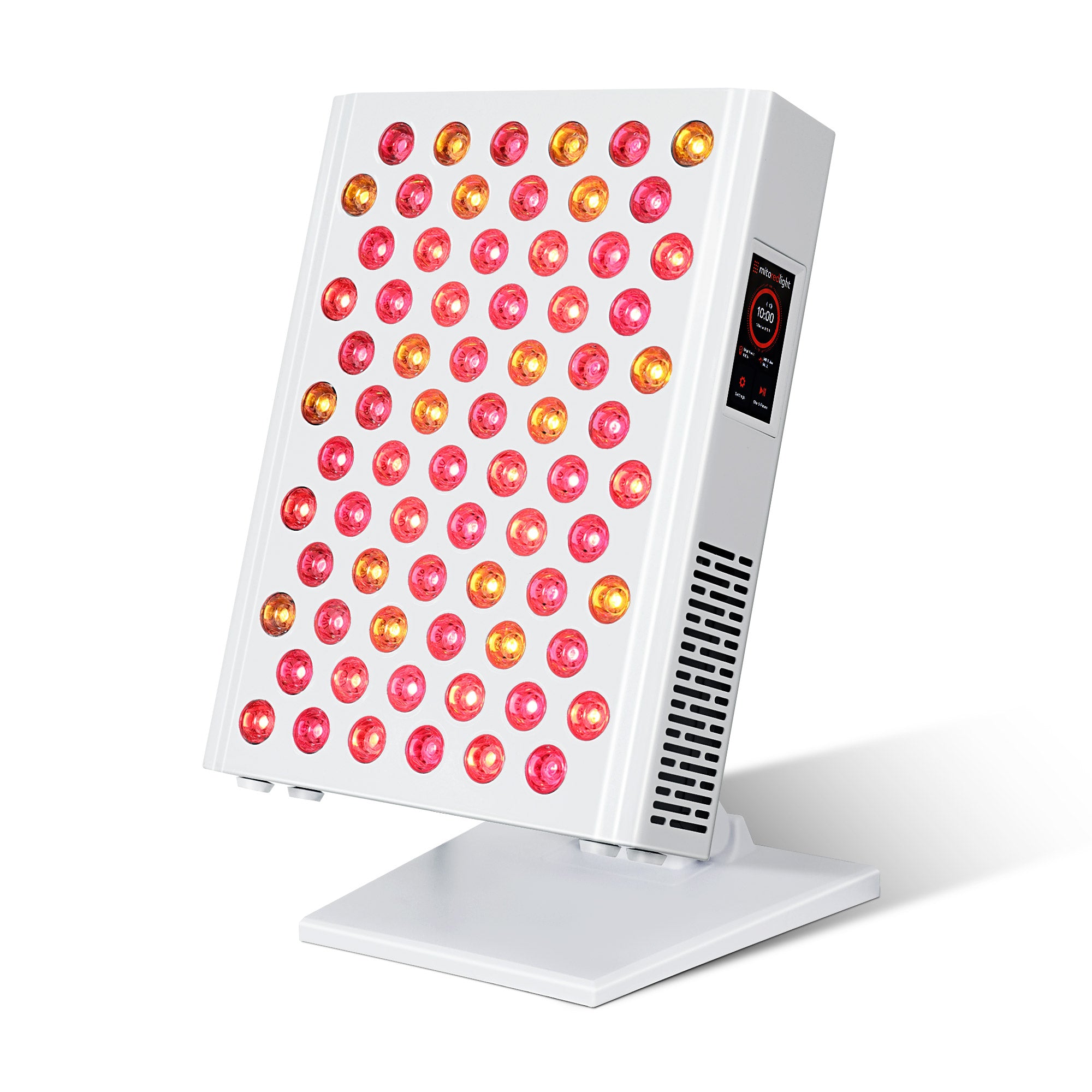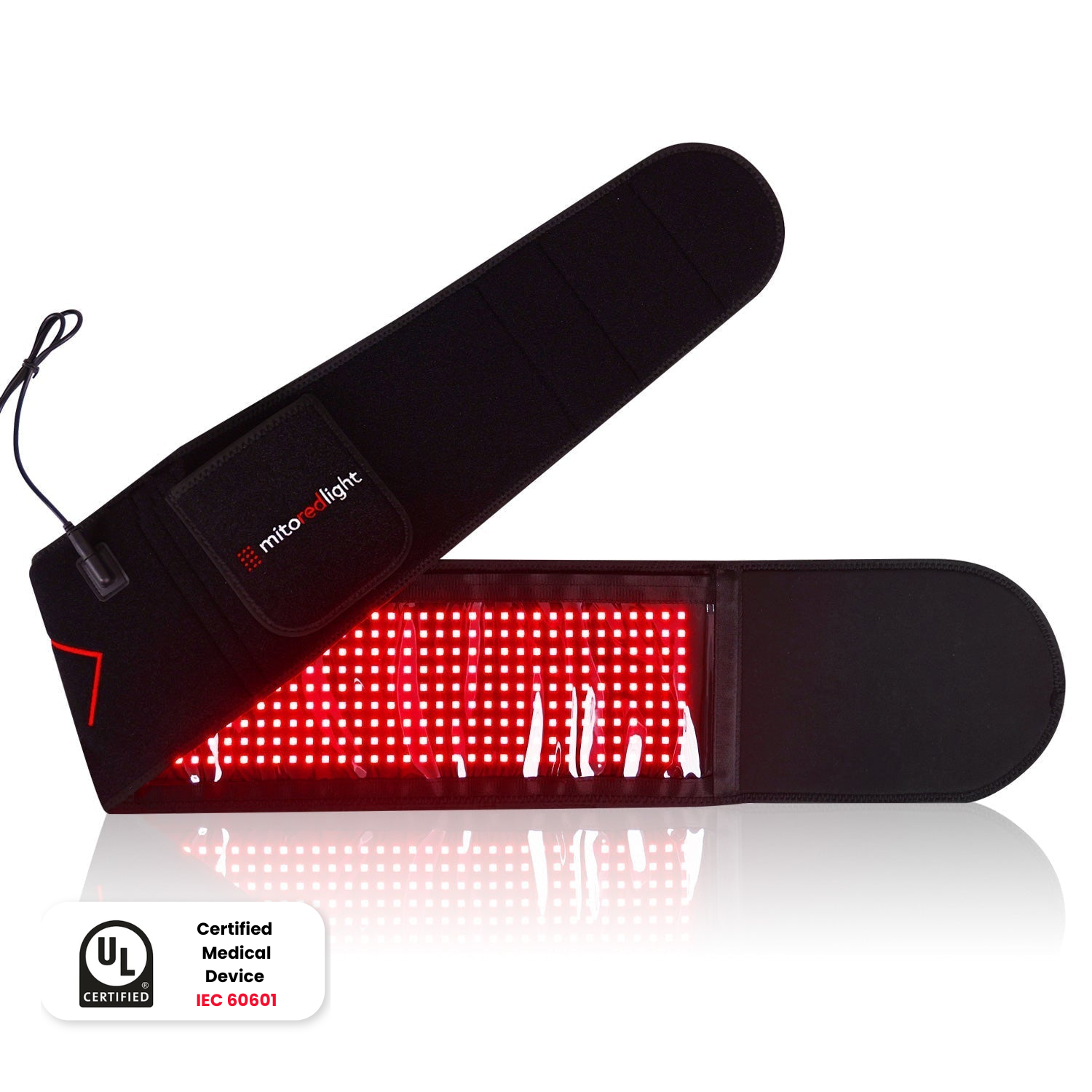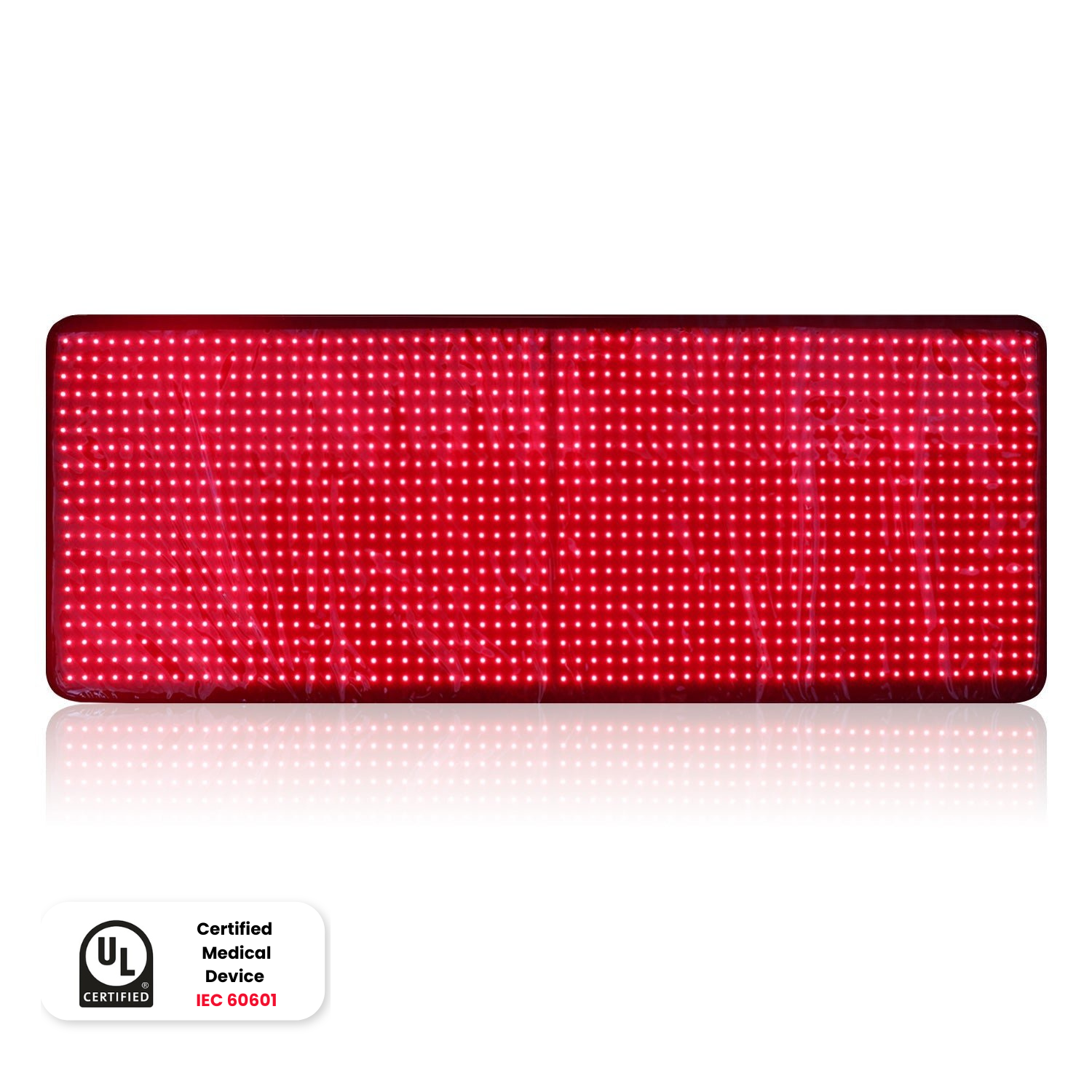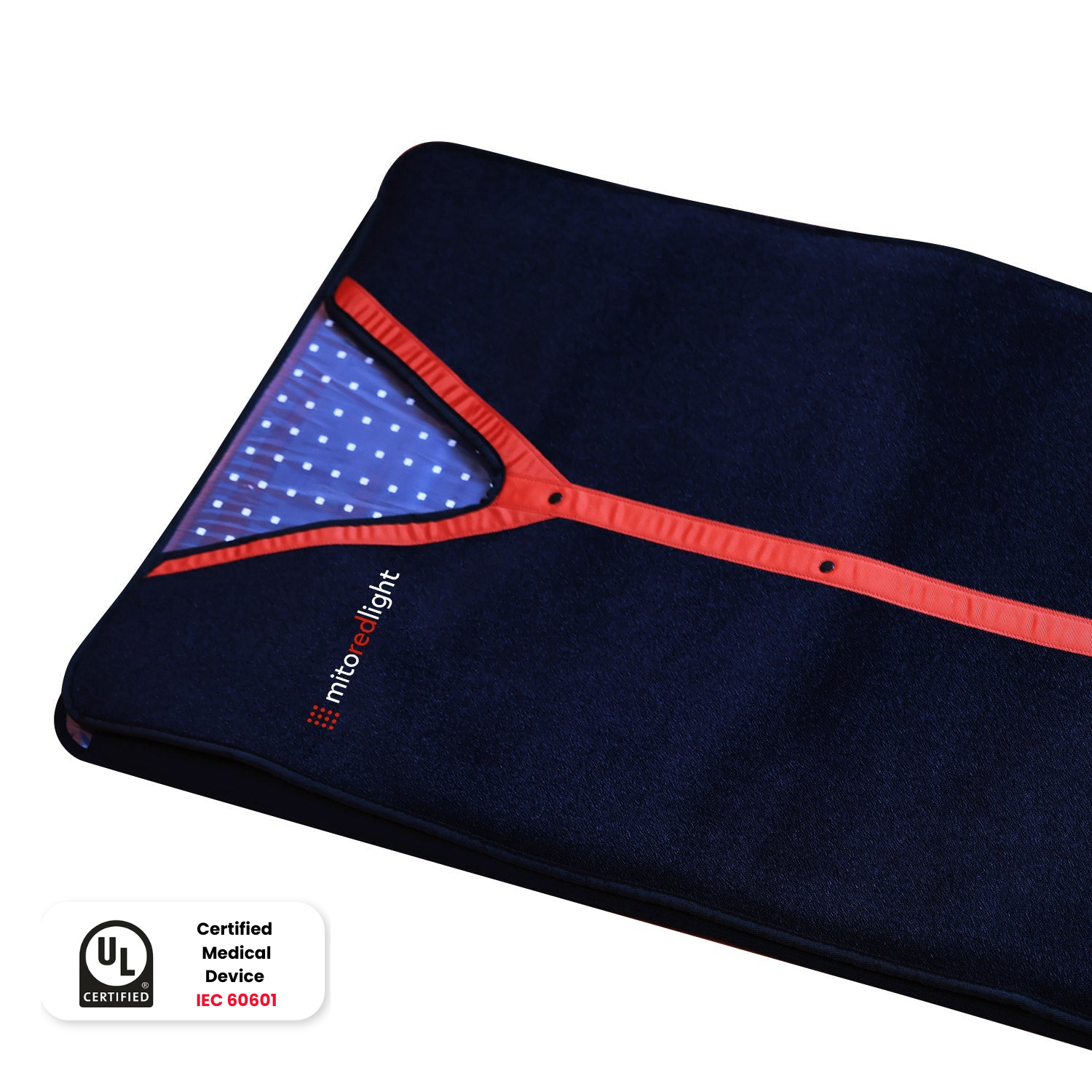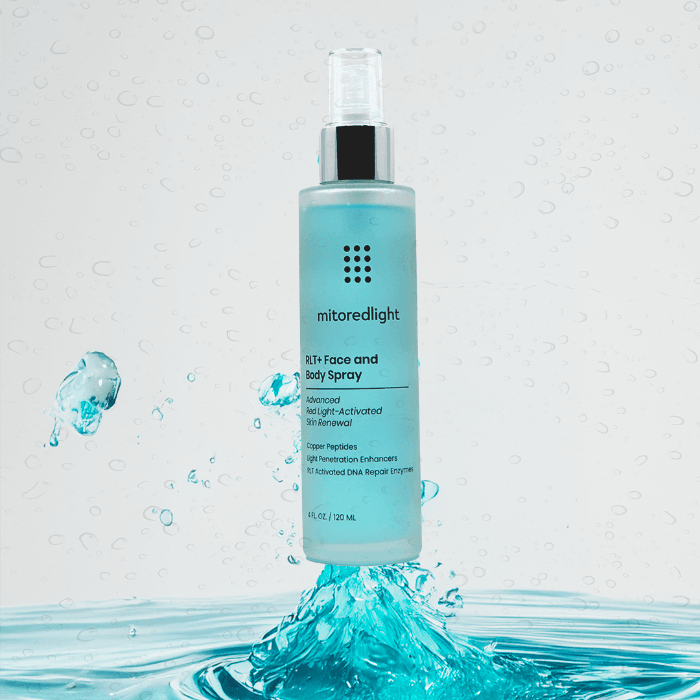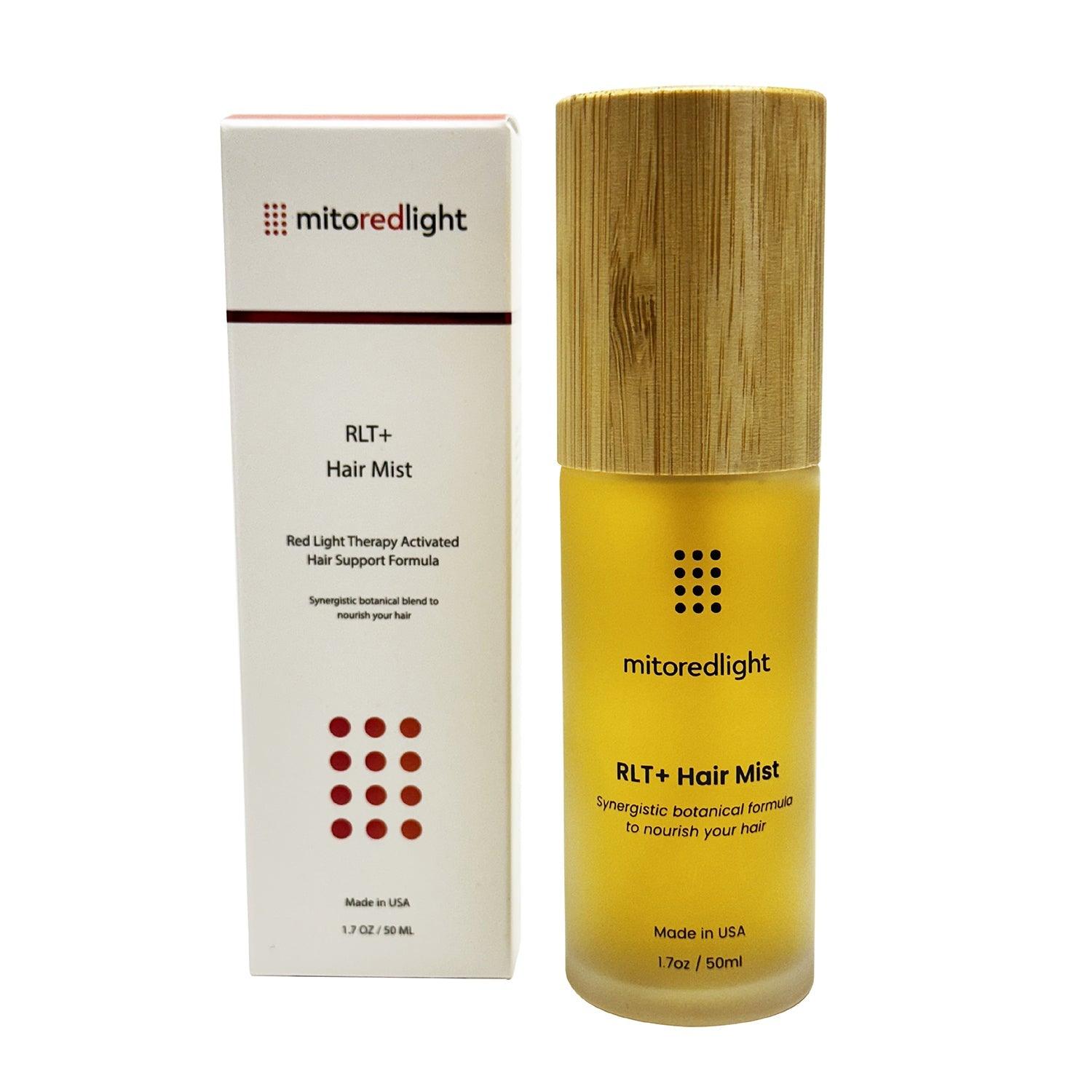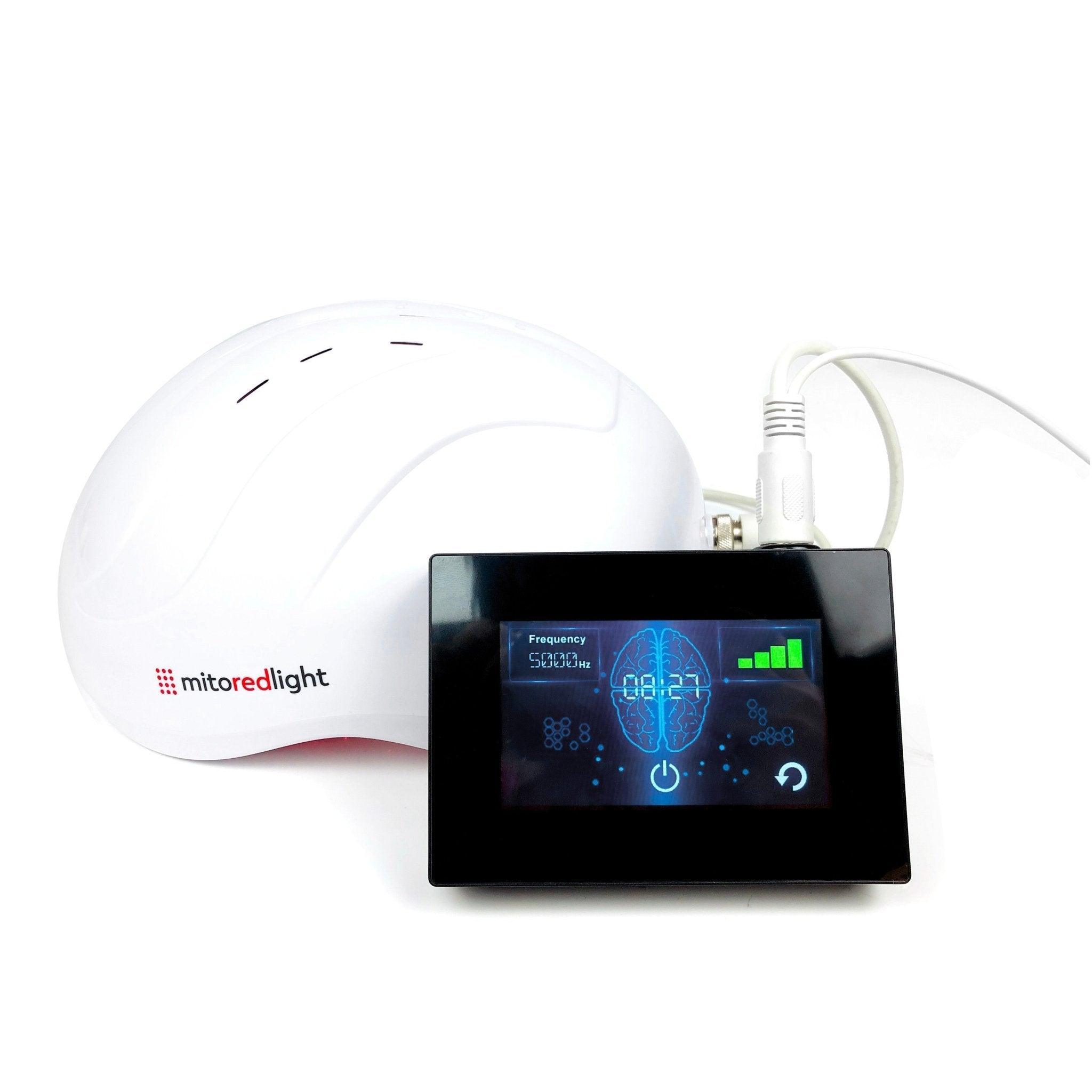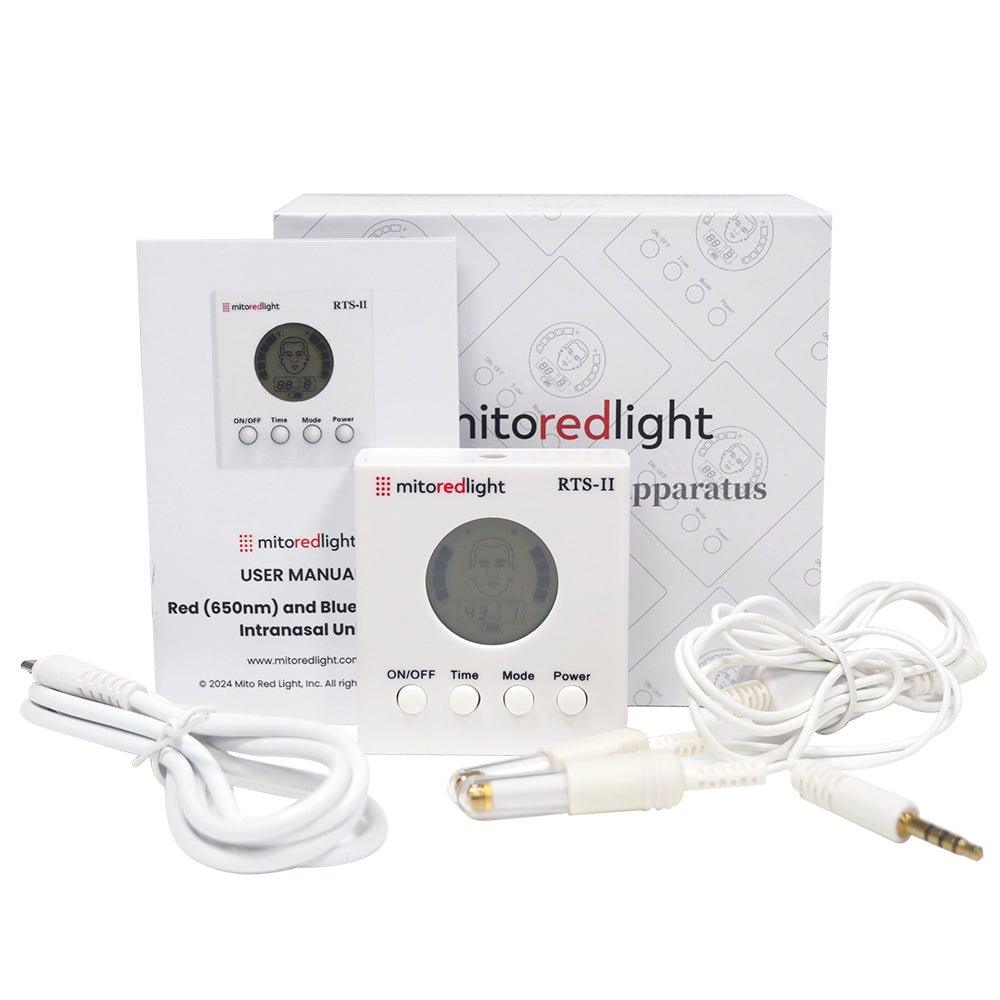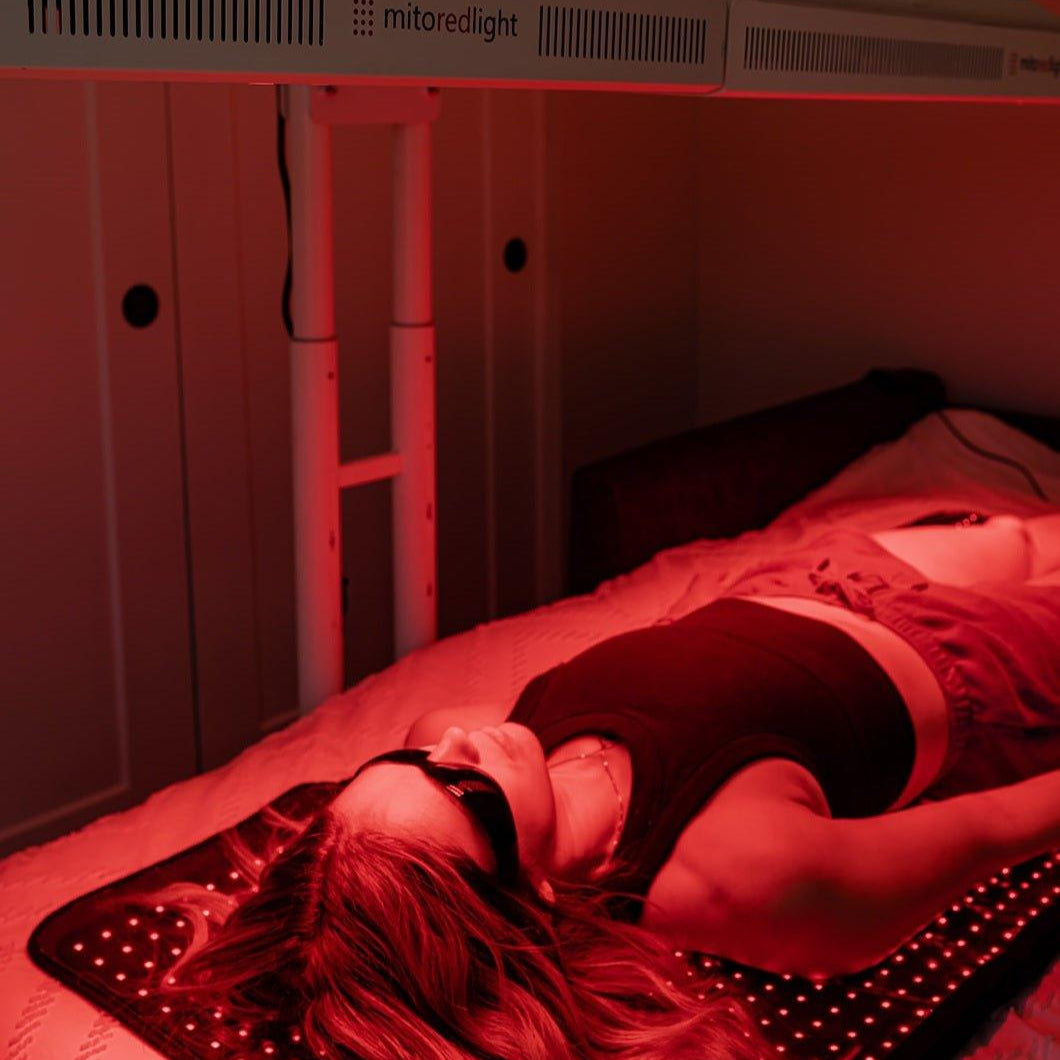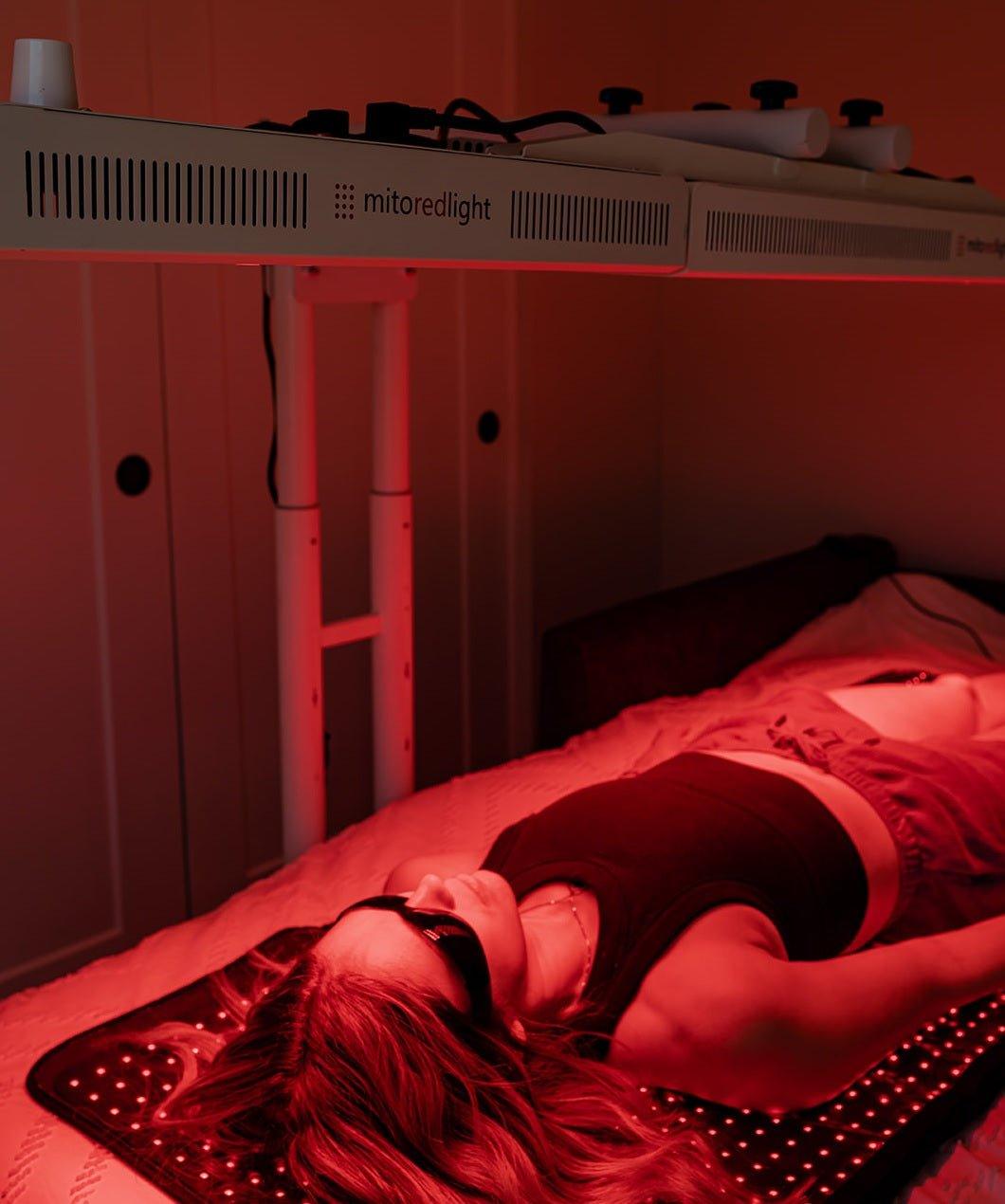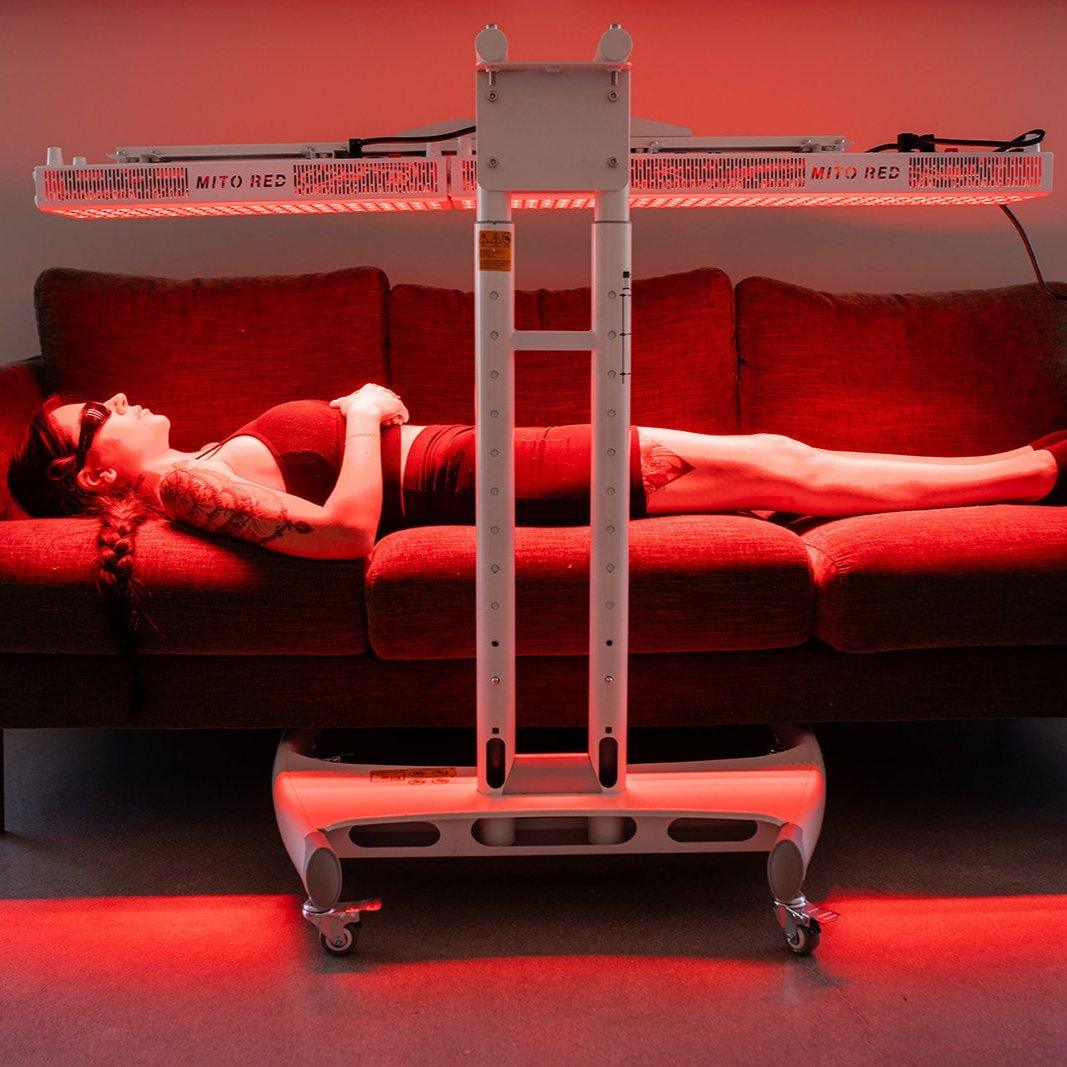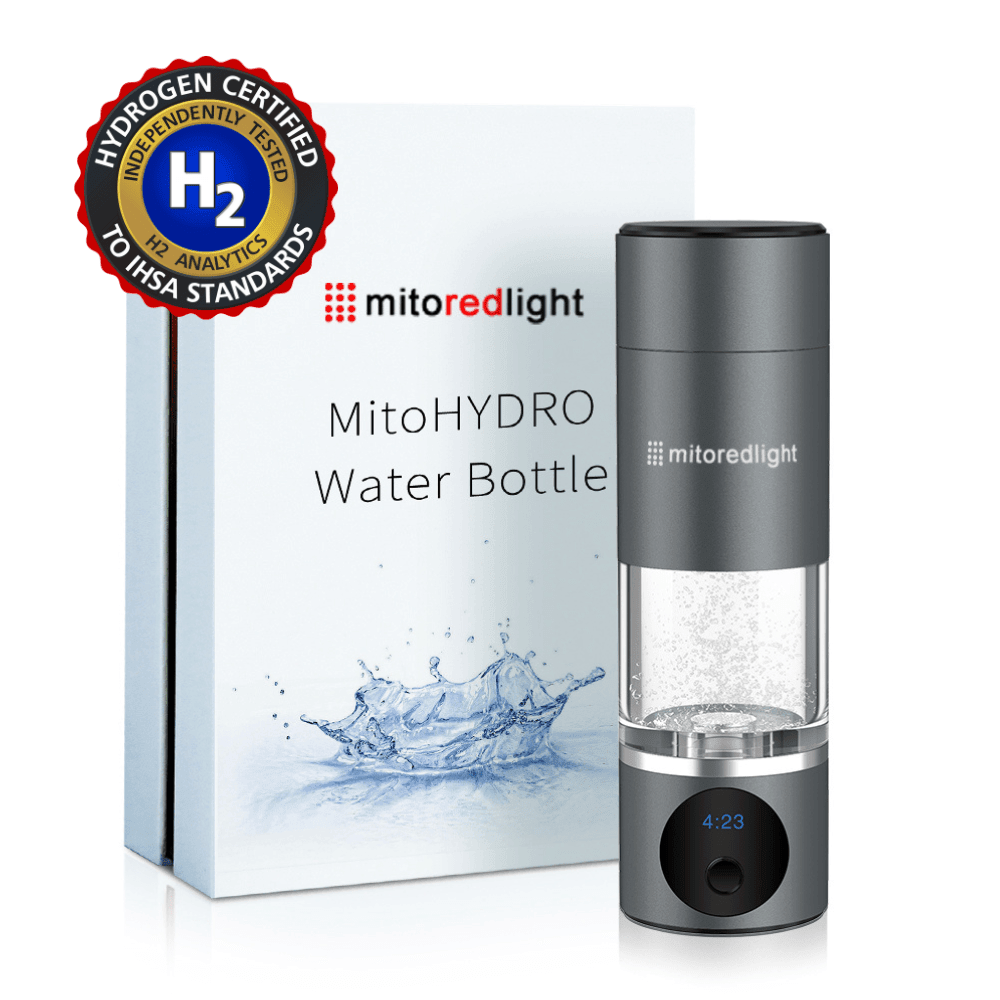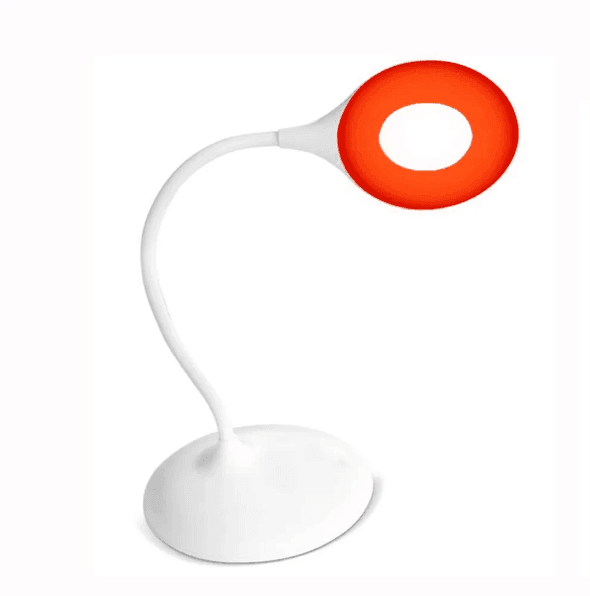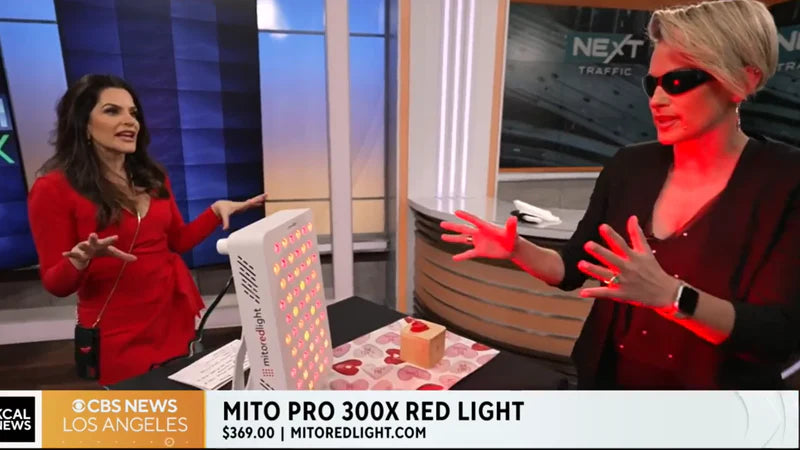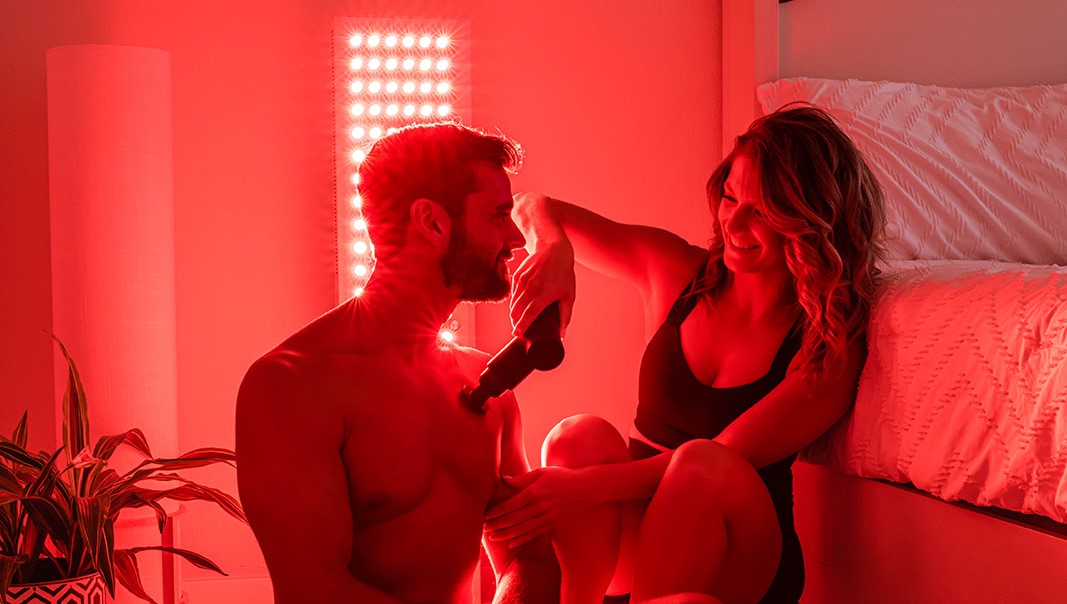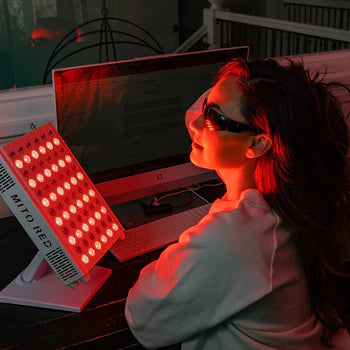DISCLAIMER: Mito Red Light devices are Class II wellness devices aimed at affecting the body through topical heating and supporting cellular function. The information provided in this article and on this site is for educational purposes only and is not intended to imply effectiveness of Mito Red Light devices for any specific application. The information provided in this article and on this site is not intended to diagnose, treat, cure, or prevent any disease, is not a substitute for consultation with a licensed medical provider and should not be construed as medical advice. Click here to read our article on potential contraindications of red light therapy..
Red light therapy offers people options for new ways to improve their health. This innovative, natural therapy is becoming increasingly popular for muscle health, pain relief, better sleep, hair growth, and skin care. People are using it to support their wellness or to optimize their existing health routines.
As red light therapy technology advances, however, so does the complexity of choices available to consumers. One question often arises:
Does adding more wavelengths to a red light therapy device enhance its effectiveness?
This article delves into the science behind red light therapy, debunking myths and shedding light on the truth about wavelengths in these innovative devices.
Understanding Wavelengths in Red Light Therapy
The single most important part of effective red light therapy is the wavelengths it uses. Red light therapy is believed to work due to how the light it uses is absorbed by the body. Every type of molecule will absorb specific wavelengths of light that are unique to that molecule; this principle is called absorbance. By providing specific wavelengths of light, red light therapy is able to target specific molecules in the body.
Absorbance
In red light therapy, red and infrared wavelengths of light are used due to the effect they are thought to have on a molecule called cytochrome C oxidase. This molecule is a key component of energy production in the mitochondria, the tiny subcellular organs that create energy for cells. The stimulation of cytochrome C oxidase is believed to be the main driver of the effects of red and near infrared light.
Penetration and Intensity
In addition to absorbance, there are two other important concepts in red light therapy; these are penetration and intensity. Certain wavelengths of light may have positive biological effects; however, their impact depends on how deep they can penetrate into the body. The depth that light can penetrate depends entirely on the length of its wavelength. Light with short wavelengths, like ultraviolet light, will not get past the skin. Very long wavelengths, like those used in X-rays, can pass right through the body. Red and infrared light is somewhere in between, penetrating several centimeters into the body.
Intensity is also important and is sometimes referred to as the “dose” of light. Simply put, the more light there is at one time, the greater the effect it can have on the tissues it reaches. Higher intensity creates more of an effect in a shorter time.
The Myth of More Wavelengths
The allure of 'more' often captivates people’s attention, suggesting that an advertised increase in some "number" equates to superior outcomes. However, in the realm of red light therapy, this is a misconception. Adding numerous wavelengths doesn't inherently enhance the device's effectiveness; in fact, in most cases, it will actually dilute the potency of the wavelengths that work. This dilution can lead to each discrete wavelength falling below the therapeutic threshold, especially crucial in near-infrared (NIR) wavelengths where intensity is paramount for deep tissue penetration and repair.
More wavelengths aren’t necessarily bad, but it is difficult to provide more wavelengths without reducing the intensity of each wavelength. For example, instead of using four wavelengths at an effective intensity, some red light therapy manufacturers may provide seven or eight wavelengths at lower intensities, none of which provide the minimum threshold needed to be effective.
Even though none of these additional wavelengths are intensive enough to have a meaningful effect, they can be marketed as having “more” wavelengths than other products that are actually more effective.
We've already covered the topic of "Fairy Dusting" in our article discussing the science behind the MitoPRO+.
MitoPRO+ Series - Advanced Red & Near Infrared Light Therapy
Fairy Dusting is a common marketing trick often seen in the cosmetic and supplement industries. Fairy dusting is when an active ingredient is added to a product at a low level just so the company can use it in its marketing claims. When you see beneficial ingredients highlighted on a label, you may feel more inclined to buy a product in the hopes of reaping the benefits of said ingredients. Sadly though, these ingredients aren’t included in large enough amounts to actually make a difference. Thus emerged the term fairy-dusting—including a mere “sprinkle” of the good stuff.
660nm and 850nm LEDs have become the de facto standard in red light therapy devices, in large part because they are easier and CHEAPER to source. Some "less than fully transparent companies" may advertise that they are incorporating several other 'alternativo wavelengths" but leave for the fine print that these LEDs account for only 5% or 10% of the LEDs in their panel. Again, this is especially crucial in near-infrared (NIR) wavelengths where intensity is paramount for deep tissue penetration and repair.
MitoPRO X and MitoADAPT: A Closer Look
Our MitoPRO X and MitoADAPT stand out for their strategic design and functionality. These models integrate a thoughtful balance of wavelengths, each serving a specific purpose, and ultimately ensuring that power and effectiveness are not compromised.
Some competitors may use the false premise of numerous wavelengths to sell their products but only provide one chip per lens, thus severely diluting the maximum intensity of each wavelength contained in the panel.
In contrast, both the MitoPRO X and MitoADAPT offer a dual-chip LED design.
The unique design allows for two different wavelengths under EVERY lens, designed in such a way that the user can choose which chip will be illuminated.
The chart below illustrates this clearly as compared to an example competitor panel.

What is obvious when reviewing the above is that these other panels that are marketing to give you "more" (wavelengths) are actually giving you less.
By only including one chip per lens, when adding they are forced to reduce the other wavelengths (thereby diluting their intensity).
Furthermore, we find that many of these panels are still essentially 660nm and 850nm panels with a few other wavelengths 'fairy-dusted' in. Great for marketing, but not great for the consumer who doesn't know any better.
We should probably clarify here, that although or PRO X and ADAPT Mega panels, contain 1200 chips, only 600 chips are illuminated at any given time. The point is that in adding wavelengths into these panel series we have not engaged in 'addition by subtraction' - we have instead added the wavelengths by increasing the number of chips, and have designed panels that put the power into the hands of the user to decide which combination of wavelengths to use.
The groundbreaking design means that the MitoPRO X is equivalent to having THREE typical red light therapy devices in one, and the patent pending MitoADAPT is equivalent to have having SEVEN standard red light therapy panels combined into one.
The Science Behind Effective Wavelengths and the Optimal Part of the Optical Window
The science of red light therapy is grounded in understanding how light interacts with our cells and the molecules they contain. Wavelengths within the range of 600nm to 900nm, sometimes called the optimal 'therapeutic window,' are absorbed efficiently into the body, thereby acting on the mitochondria, stimulating cellular energy production (ATP).
Why is this the optimal part of the therapeutic window? This can be better understood by reviewing the graph below:
Light below 600nm is not absorbed into the body well, and is absorbed by several other chromophores (light absorbing molecules) in the body such as blood, skin (melanin) and fat.
Light above 900nm begins to be absorbed much more by water. The graph above clearly shows the steep rise in water absorption above 900nm.
Mito Red devices are designed to concentrate the light energy in the optimal part of the therapeutic window, while maximizing for flexibility within that window.
Our MitoPRO X and MitoADAPT devices optimize for flexibility without sacrificing or diluting intensity,
Related Article: The Myriad Dangers of Blue Light
"New" Wavelengths - Innovation or Hype?
If we broaden our search to 1064nm we find more studies, but still the strength of scientific evidence is not anywhere near the level of any specific wavelength (630,633,660,810,830,850) within the optimal part of the therapeutic window.
1060nm is used for Fat Loss
When we expand our inquiry beyond scientific publications and into clinical practice, we find something else.
1060nm is used in dermatology offices for fat loss


Mito Red Light Therapy Panel Design - Science & Engineering
It can be easy to over simplify how red light therapy panels work. The reality is that a well designed LED panel must have high quality components and important design characteristics which include LED chip, wavelength, LED package design, beam angle, and LED chip efficiency.
LED chip efficiency depends on a large number of factors including: the class of compound semiconductor used to make the LED, the structure (doping, thickness, composition) of the semiconductor layers in the LED chip, electrode/contact design, light extraction structures added or created during fabrication of the LED chip, operating temperature and the current density. Current density is the amount of current per unit area of the LED chip.
Of these factors, the most significant is the class of compound semiconductor used to make the LED chip. The choice of compound semiconductor is largely determined by the bandgap of the compound semiconductor, since the bandgap of the active region (the portion of the LED structure where electrons and holes recombine and create light) is inversely proportional to the wavelength of light emitted. LEDs emitting relatively short wavelengths of light (blue or green) require the use of wide bandgap semiconductor materials, and LEDs emitting relatively long wavelengths of light (red or near infrared) require the use of narrow bandgap semiconductor materials.
At Mito Red, we use the highest quality and most optimal materials for producing red and near infrared light in the optimal part of the therapeutic window. Our panels are not just composed of the most cutting edge technology, their design is guided by the strength of scientific evidence while optimizing for flexibility of use, user experience and value. We only offer high-quality red light therapy panels combining the very best of engineering and science. Our selection of red light therapy panels is ideal for anyone wanting to embrace holistic wellness and offers an important step towards achieving a healthier lifestyle.
We welcome you to review our selection of high-quality products for use of red light therapy at home, or to contact one of our helpful representatives at 1-866-861-6486(MITO).
Related Articles:
How To Prep Your Skin Before Red Light Therapy
Everything You Need to Know About Red Light Therapy and SKIN
How Does Red Light Therapy Work?
What Is Biohacking? Benefits, Examples, and More
Related Products:
MitoPRO™ X | Red Light Therapy Panel Series
